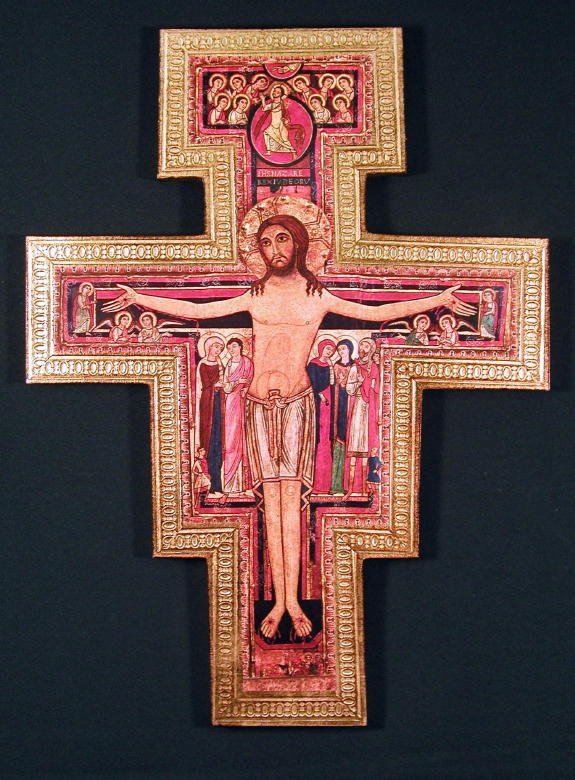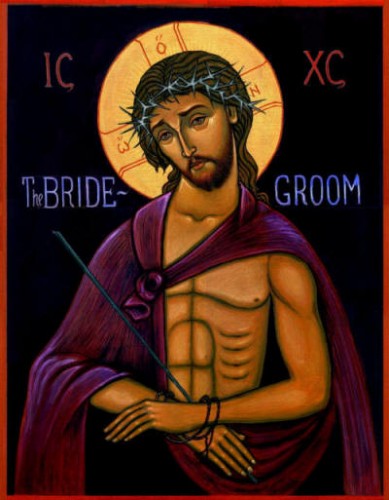 Let me be frank with you: I do not know quite what to make of a recent story in The Oklahoman about a bitter fight in a local Catholic church about -- brace yourself -- an allegedly obscene crucifix.
We may as well start right at the top:
Let me be frank with you: I do not know quite what to make of a recent story in The Oklahoman about a bitter fight in a local Catholic church about -- brace yourself -- an allegedly obscene crucifix.
We may as well start right at the top:
WARR ACRES -- Churchgoers are outraged over a crucifix in a Catholic church that they say shows an image of genitalia on Jesus.
The controversial crucifix has caused a deep divide among members of St. Charles Borromeo Catholic Church, where it hangs above the main altar.
"There are a couple people who have left the parish," said the Rev. Philip Seeton, the church's pastor. "There are people in the parish who don't like it and have stayed."
Critics of the crucifix take issue with what appears to be a large penis covering Jesus' abdominal area. Seeton said the portion of the crucifix in question is meant to be Jesus' abdomen "showing distension" -- not a penis. ...
Janet Jaime, a local iconography artist who designed the crucifix, had no comment.
"I think it was painted according to the certain specific rules of iconography and church art," Seeton said of the crucifix.
The crucifix is about 10 feet tall. It has been hanging above the altar since Feb. 21. Seeton said the crucifix doesn't concern him, and there are no plans to remove it.
First of all, you have to see the icon in question to understand much of what I am about to say. I can't run the photo, of course, due to copyright issues. The three-part video presentation that tops the Oklahoman report is also very useful, especially since this is a story about a visual controversy.
The story does contain some references to icons and their creation that I, as an Eastern Orthodox believer, would question. When I first saw the story -- in print only -- I doubted whether we were talking about an "icon" at all.
But this is an icon and, clearly, one that shows the ties between the Christian East and the Franciscan tradition. The story does a good job of explaining that this is a San Damiano Cross (another example is at the top of this post), one based on clear archtypes and guidelines. I am not sure that this means the artist "designed" the cross, rather then "creating" or "writing" it, but the point is made. Click here for more examples of that crucifix.
As for the controversial part of the image, you can see that it is somewhat different -- but not much -- than the norm in the San Damiano archtype.
To see how this issue of pain, suffering and "distension" is handled in other images, it would help to look at some examples of the icon known in the East as "Christ the Bridegroom."
But here's my main point: I am not sure that this is a fight over an icon. It's clear that the reporter and editors know that more is going on with this controversy, as well.
 What are we to make of this part of the story?
What are we to make of this part of the story?
... (N)umerous current and former church parishioners contacted The Oklahoman this week expressing outrage at what many called a "pornographic" depiction of Jesus. Many asked that their identities be withheld. Parishioner Rita Cook said the crucifix is one of many recent decisions by Seeton, who has been at the church since 2008, that longtime parishioners are concerned with.
"The crucifix is the straw on the camel's back," said Cook, who has attended the church for 35 years. "I think it's an embarrassment to our Lord. I think it's an embarrassment to our parishioners. And I think it's an embarrassment to our visitors."
Molly Jenkins, who is not a member of the church, said she attended a funeral at the church recently and immediately noticed the crucifix. "I was appalled at the sexualization of Christ," said Jenkins, who is not Catholic. Jenkins said she contacted a Catholic friend to ask whether such crucifixes are common.
And so forth and so on. As you would expect, some people are upset that children from a nearby Catholic school are being exposed to this icon -- thus creating a link between this controversy to the wider issue of sexual scandal and abuse in the church.
What is going on? Is this, in fact, a fight with the priest? Is it possible that, well, the priest is from some other part of the country and is struggling to relate to people in Oklahoma? Then, there is a chance that the parishioners are not used to seeing iconography -- period. The story does explain:
The crucifix in question is a San Damiano cross, a common Catholic icon that originated in Italy in the 12th century and is widely associated with St. Francis of Assisi and the order he founded, the Franciscans. The original cross is in Assisi, Italy.
The San Damiano cross is considered an icon because it depicts biblical figures. The crucifix hanging at St. Charles Borromeo resembles other San Damiano crucifixes except for Jesus' abdominal area, which is noticeably more pronounced than on similar crucifixes.
I think that is an accurate statement (other than the statement that this "an icon because it depicts biblical figures") and I can see why people who do not understand the tradition, or this somewhat strange variation on the tradition, would be upset. I am not sure that the Oklahoman is in a position, at this point, to really know what is going on in that parish.
Strange, strange, strange.
NOTE: Updated to note that I could not run the actual Oklahoman photo due to copyright issues.
NOTE II: A reader has provided some new info, namely that that Father Philip Seeton has previously served as pastor of a Byzantine Catholic Church -- Eastern Rite -- for a number of years in Texas. This would certainly imply that he knows quite a bit about iconography and the traditions that define the creation and use of icons in the Eastern churches. That certainly would have been good information to include in the story.
